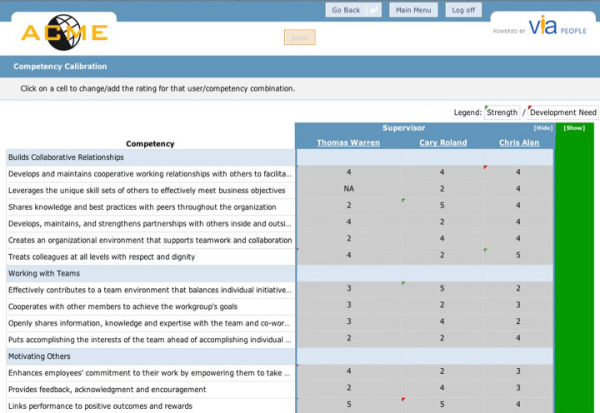Organizations that implement highly successful 360 programs have a few secrets to running such successful feedback initiatives. And they're not sharing...but we are! 360 Feedback is as hot as it's ever been. In the past 20 years we have seen an acceleration in 360 feedback initiatives and many different approaches on how this can be accomplished. Of course with these different approaches we have seen some that are more successful than others. Over our many years of conducting 360 Degree Feedback initiatives we have surfaced the top three characteristics for a successful 360 feedback program. While there are certainly other factors that contribute to the program’s success, we know that these three are fundamental to achieving the full benefits of 360 feedback. 1. Clearly Define the Process and Messaging Before any 360 Degree Feedback initiative begins, there should be a clear purpose defined. Decisions need to be made on how the data will be used: Will this be strictly for development? Will there be some type of linkage with succession planning processes? Will this be used to drive training initiatives or other leadership development programs? Deciding on these important variables before the 360 process begins ensures that your positioning will be clear and participant confusion can be avoided. 2. Identify the Survey Questions that are Most Relevant for Your Business The leadership skills and behaviors deemed most important for one organization are not necessarily the same for another. Depending on the culture of the organization and the stage of growth these behavior and criteria could differ considerably. For smaller organizations that may not have the resources to develop a competency model or customized 360 feedback survey, a standard leadership assessment tool is fine as long as the questions can still be tailored. We take this approach frequently with our smaller client organizations where we provide the 360 leadership survey developed by our Industrial Organizational Psychologists and tailor the questions to be specific to our clients. This is a very efficient and effective method for getting the questions right within a limited budget and timeframe. Survey length is also a very important factor to consider when deciding on a set of survey questions. The 360 survey should never be longer than 50-60 items. A survey longer than that will inevitably result in survey fatigue so we recommend a very focused, targeted set of questions - ideally no more than 50 items. 3. Develop a Well Thought Out Plan for Feedback Delivery It’s important to have a plan for feedback delivery at the beginning of a 360 feedback initiative so this can be clearly communicated to the participants in advance. The more information is communicated to the participants up front, the more you ease any apprehension and minimize confusion around the process. For higher-level leaders (e.g., executives) we always recommend one-on-one coaching with an external coach. In our experience, when clients have attempted to coach these leaders internally, there is often apprehension about giving direct feedback when it comes to areas for development. An external coach has no internal political pressure to side-step these issues. For mid-level managers and individual contributors a group feedback delivery session is not only very well received but also cost-effective. This format typically involves first setting the stage for what to expect when participants see their report. In our training sessions, we first address the typical reactions people experience when receiving feedback. This prepares people for receiving information on their strengths as well as development areas (for more detail on strategies to keep in mind while interpreting the 360 report, see 360 Feedback- No Sweat..Even in this Heat!). We then provide a sample 360 feedback report so participants understand how to interpret each section when they receive their own report. Last, we provide the actual feedback reports to each individual and then move to action planning for development. Bringing managers or individual contributors together with their peers in this type of setting offers an opportunity to share best practices, openly discuss strategies for development planning and even form stronger relationships as they are working on an initiative that require sharing a bit of personal information.
Read More











